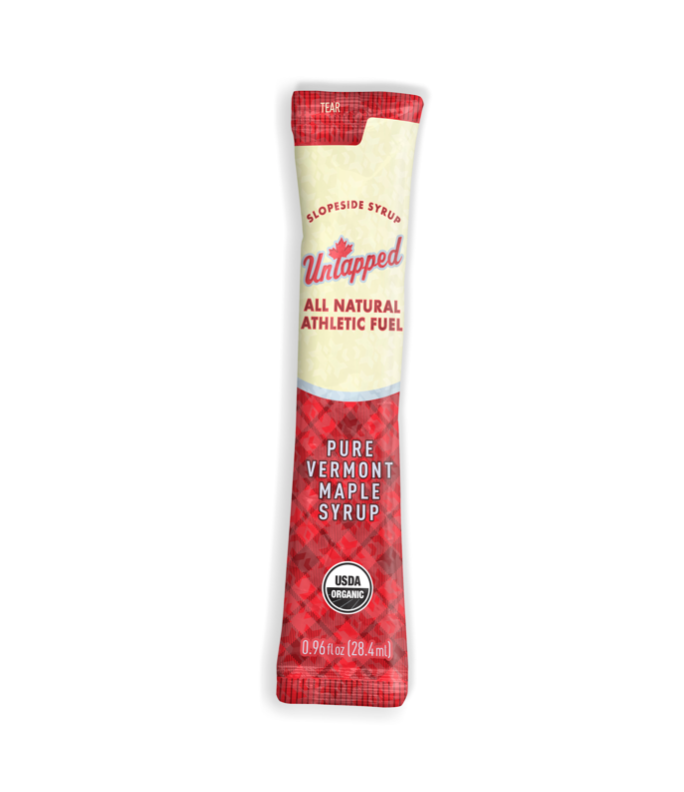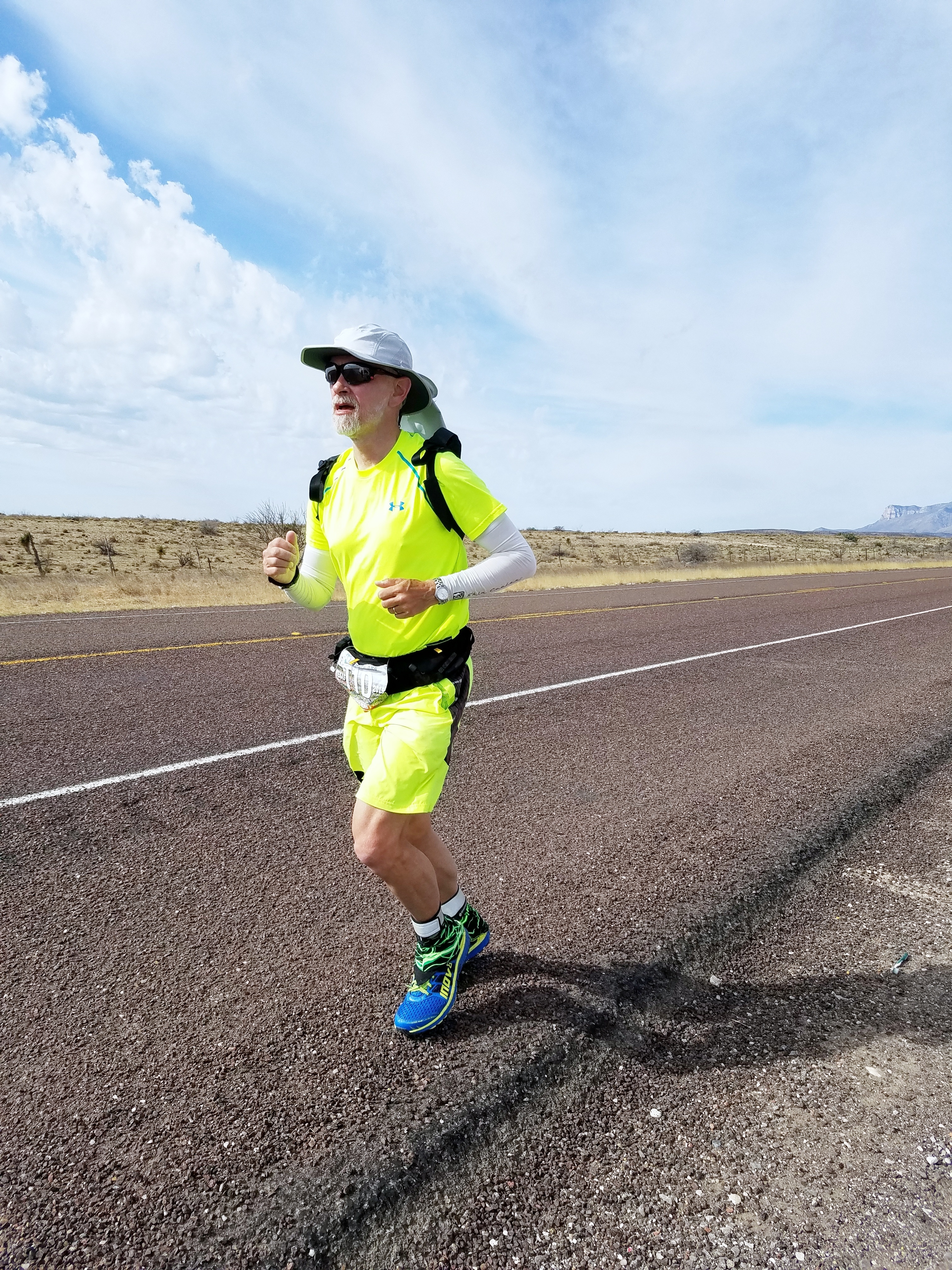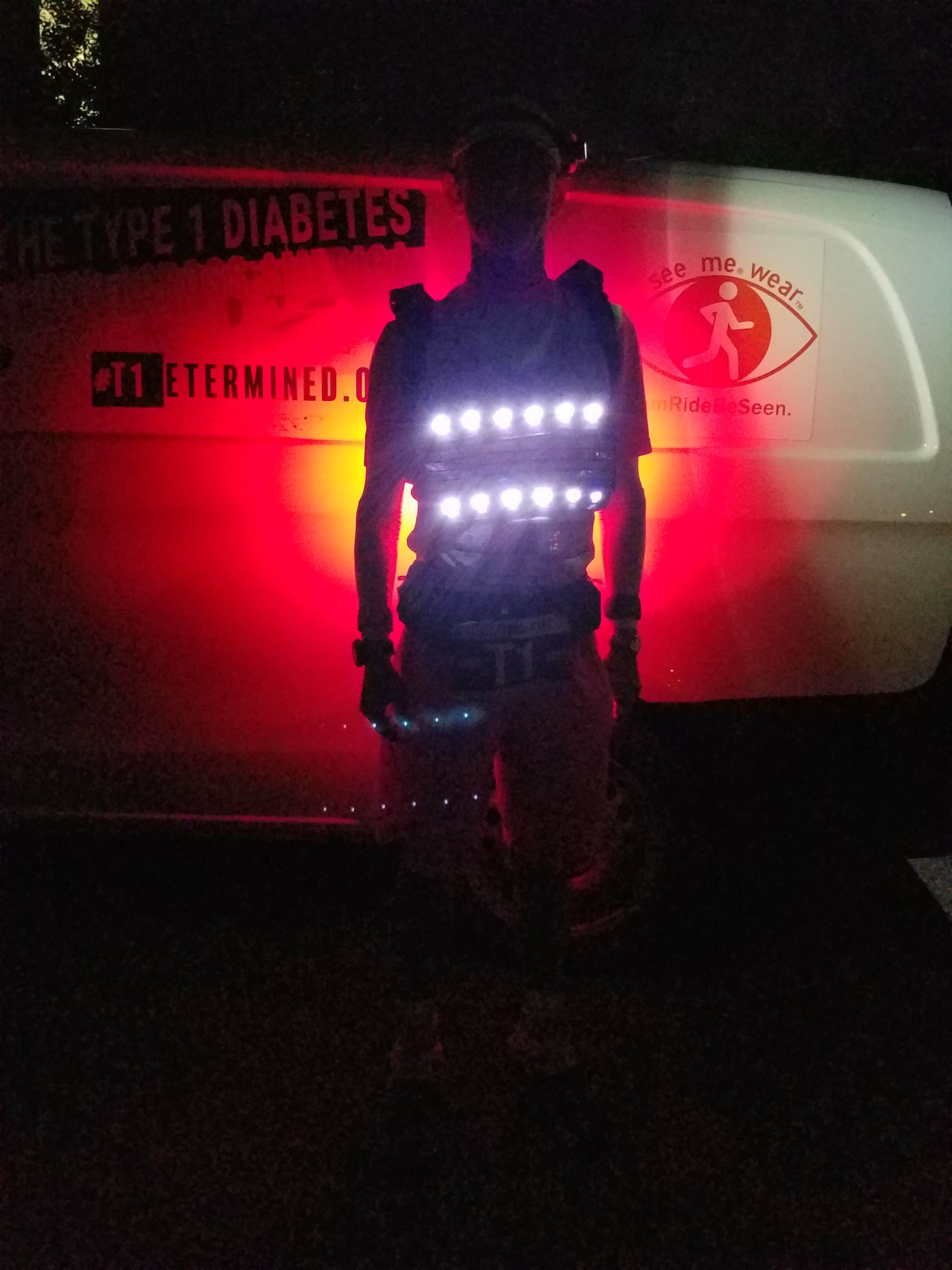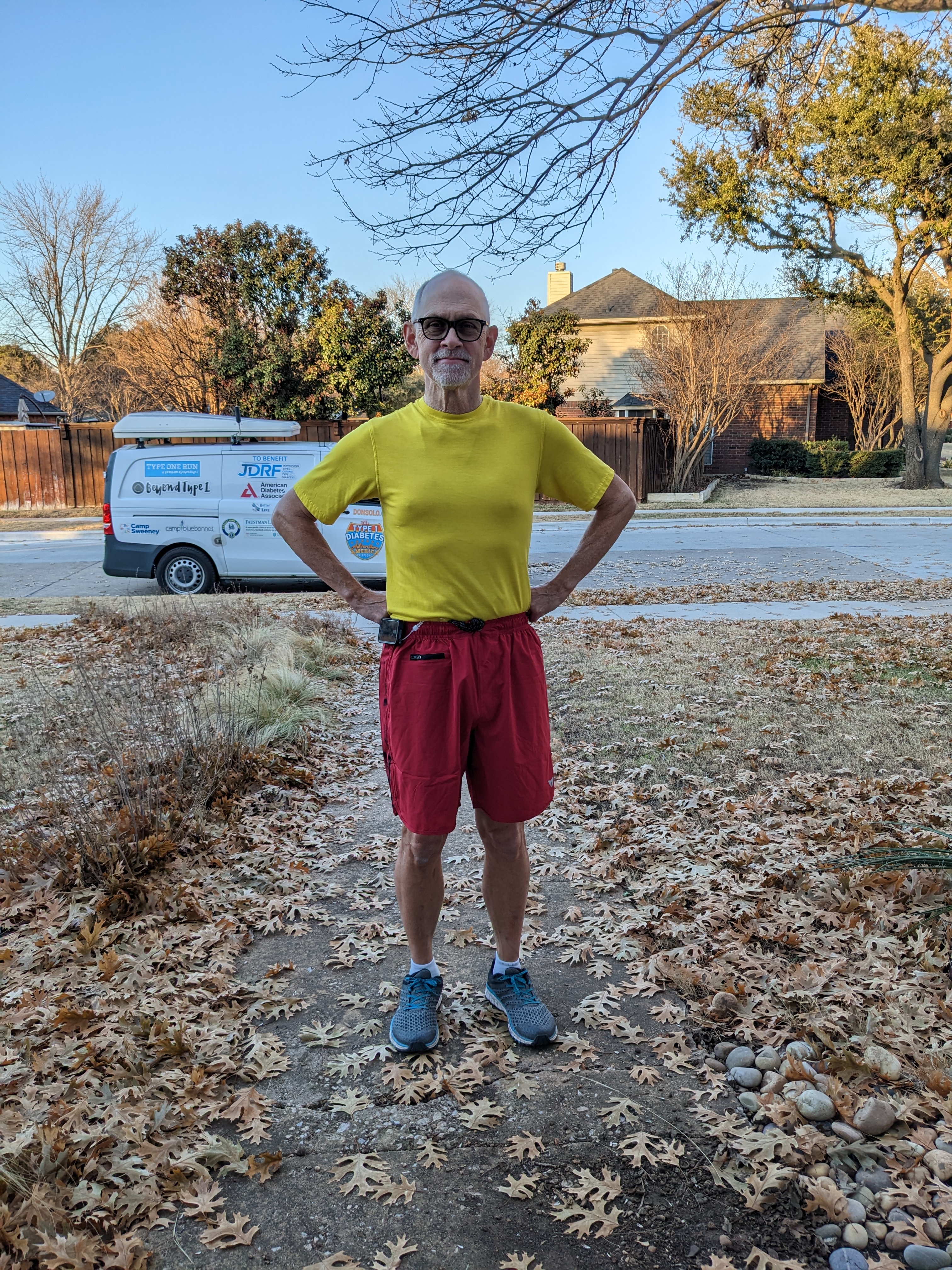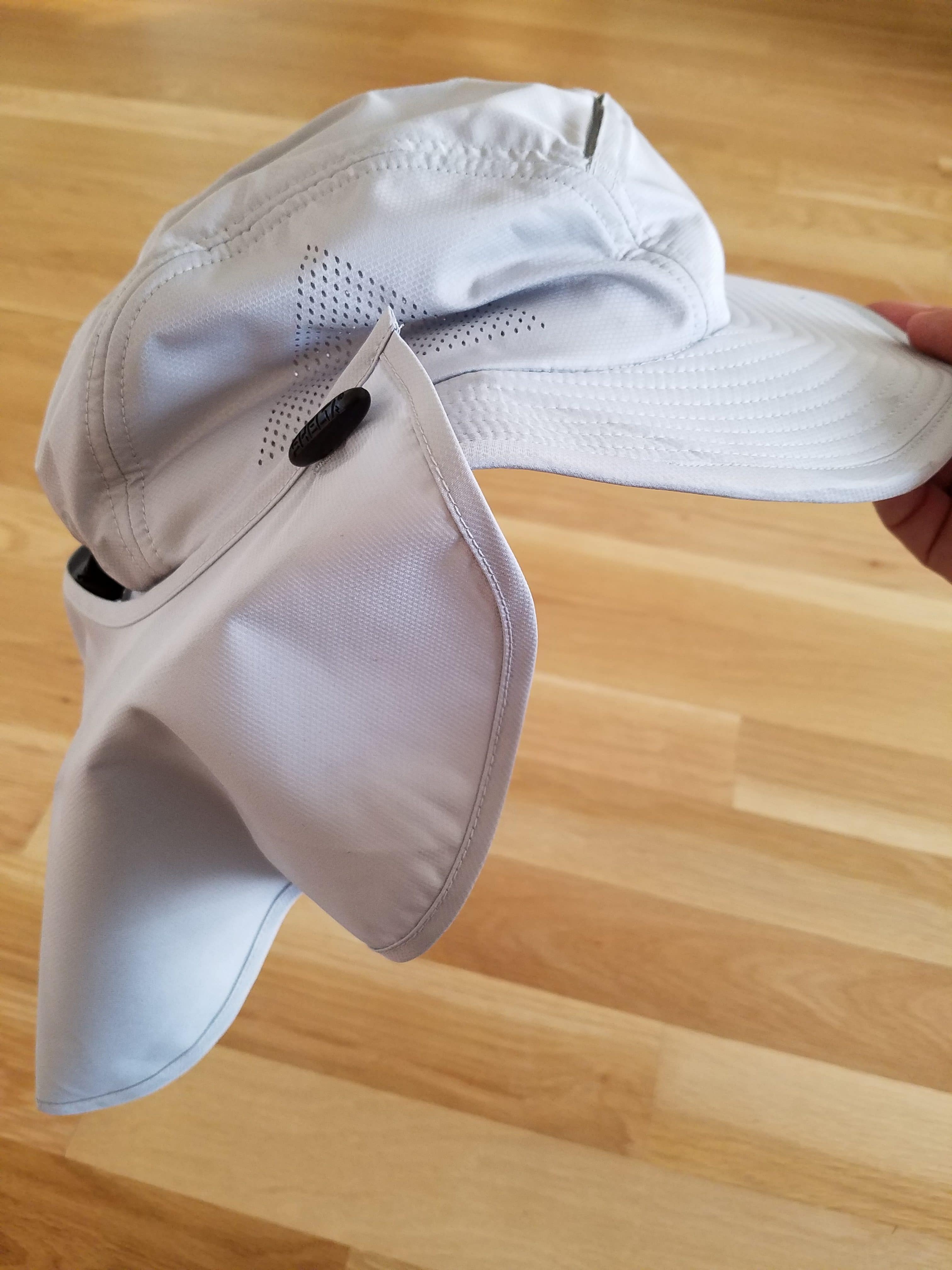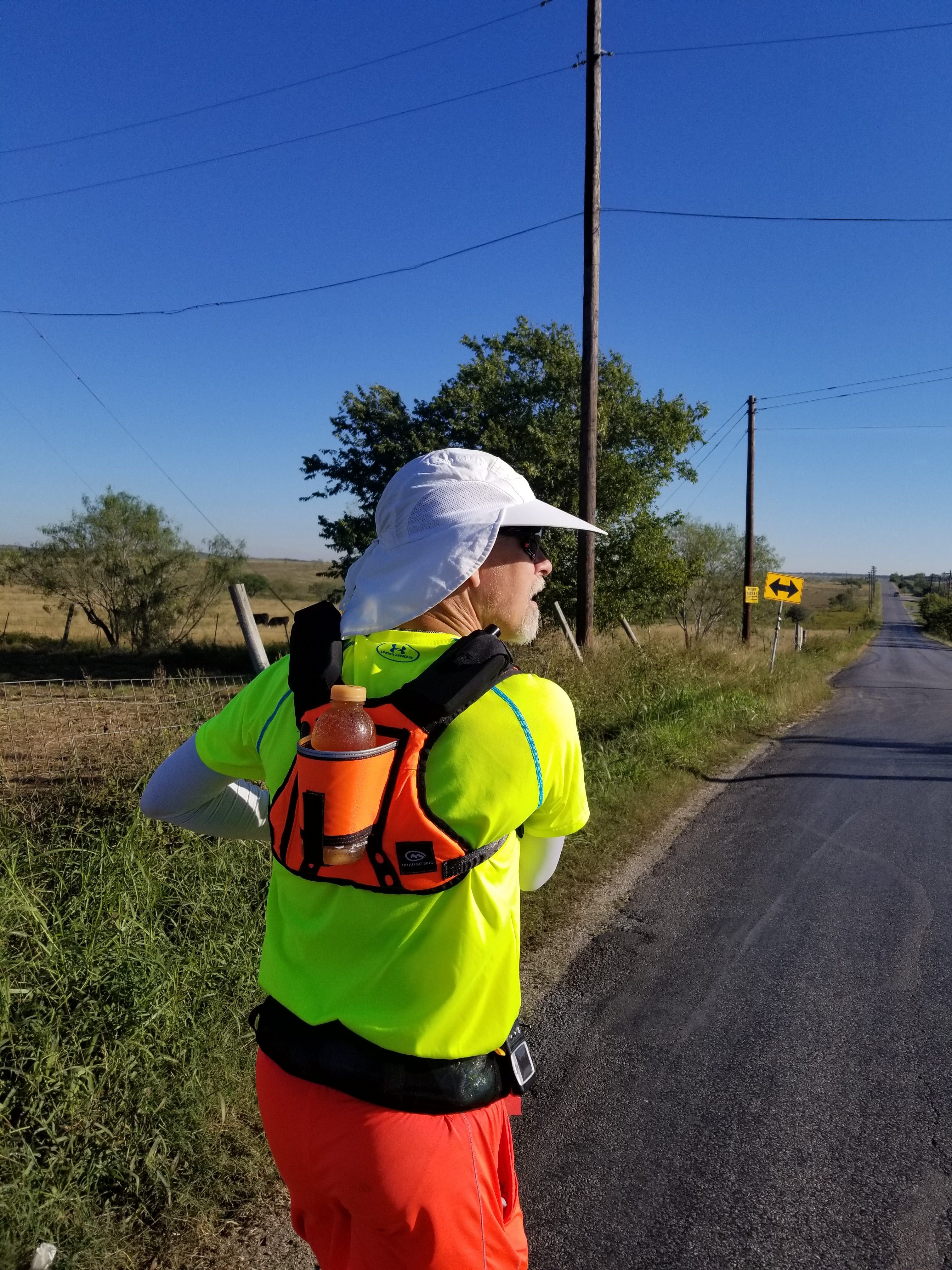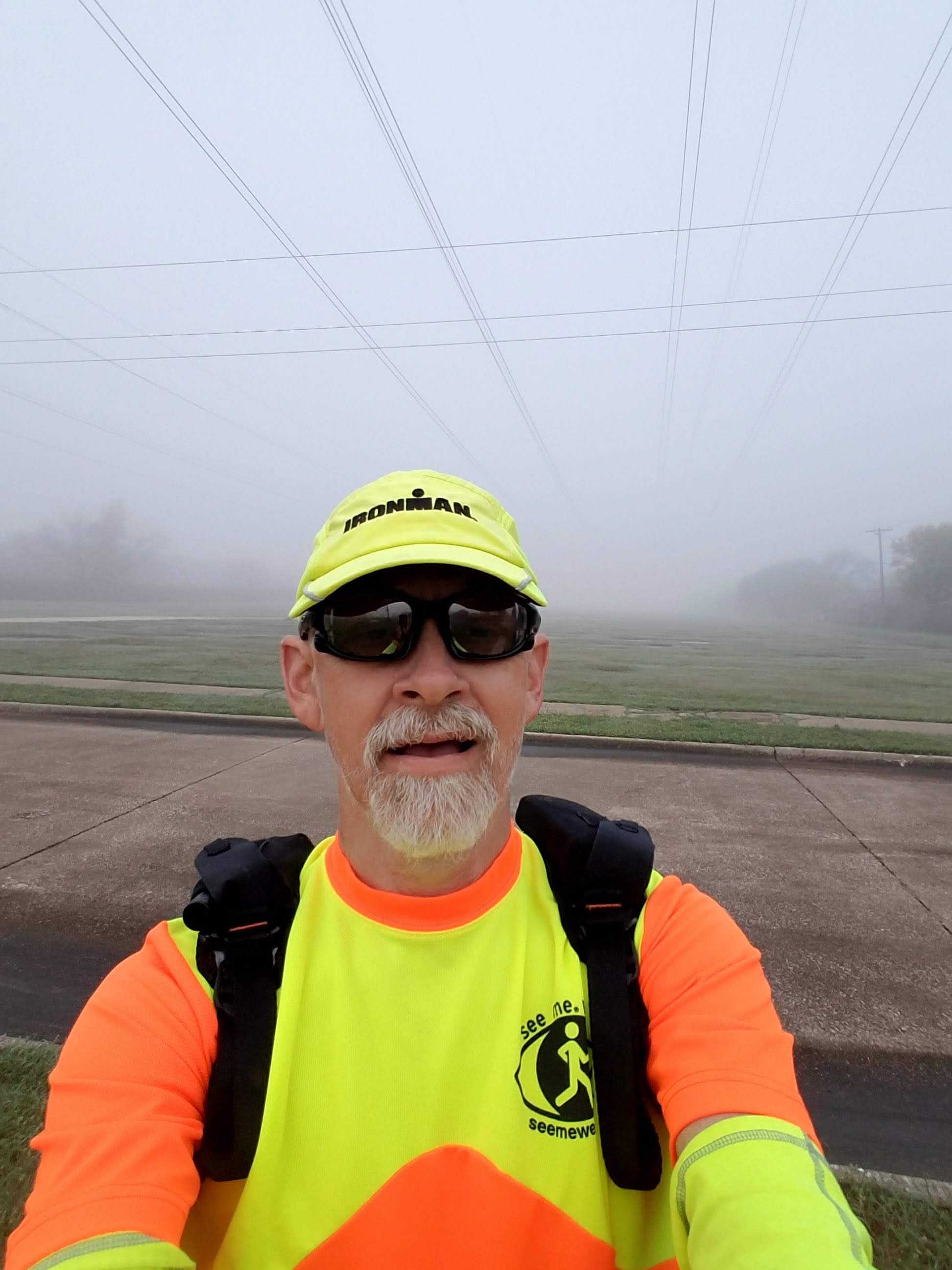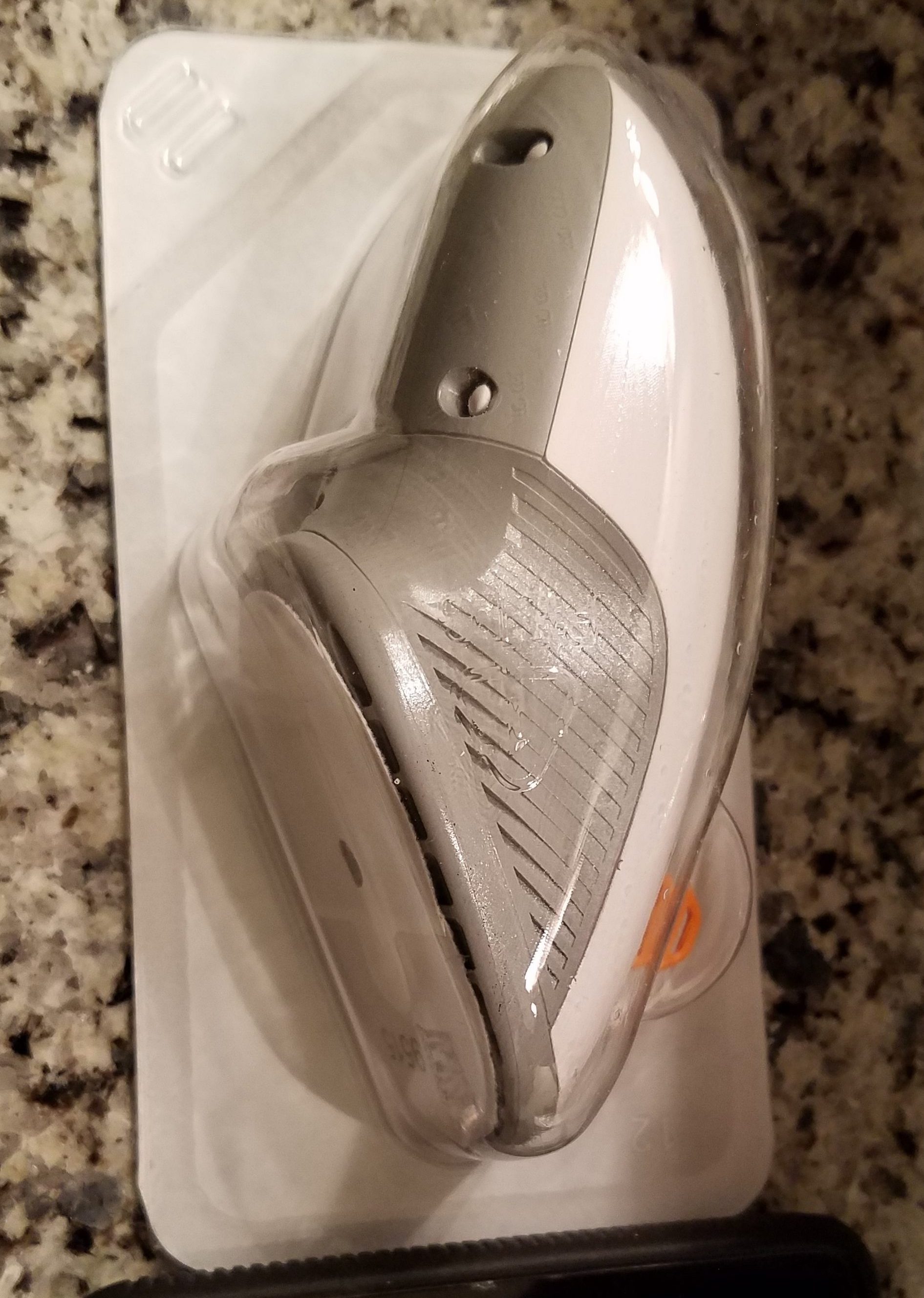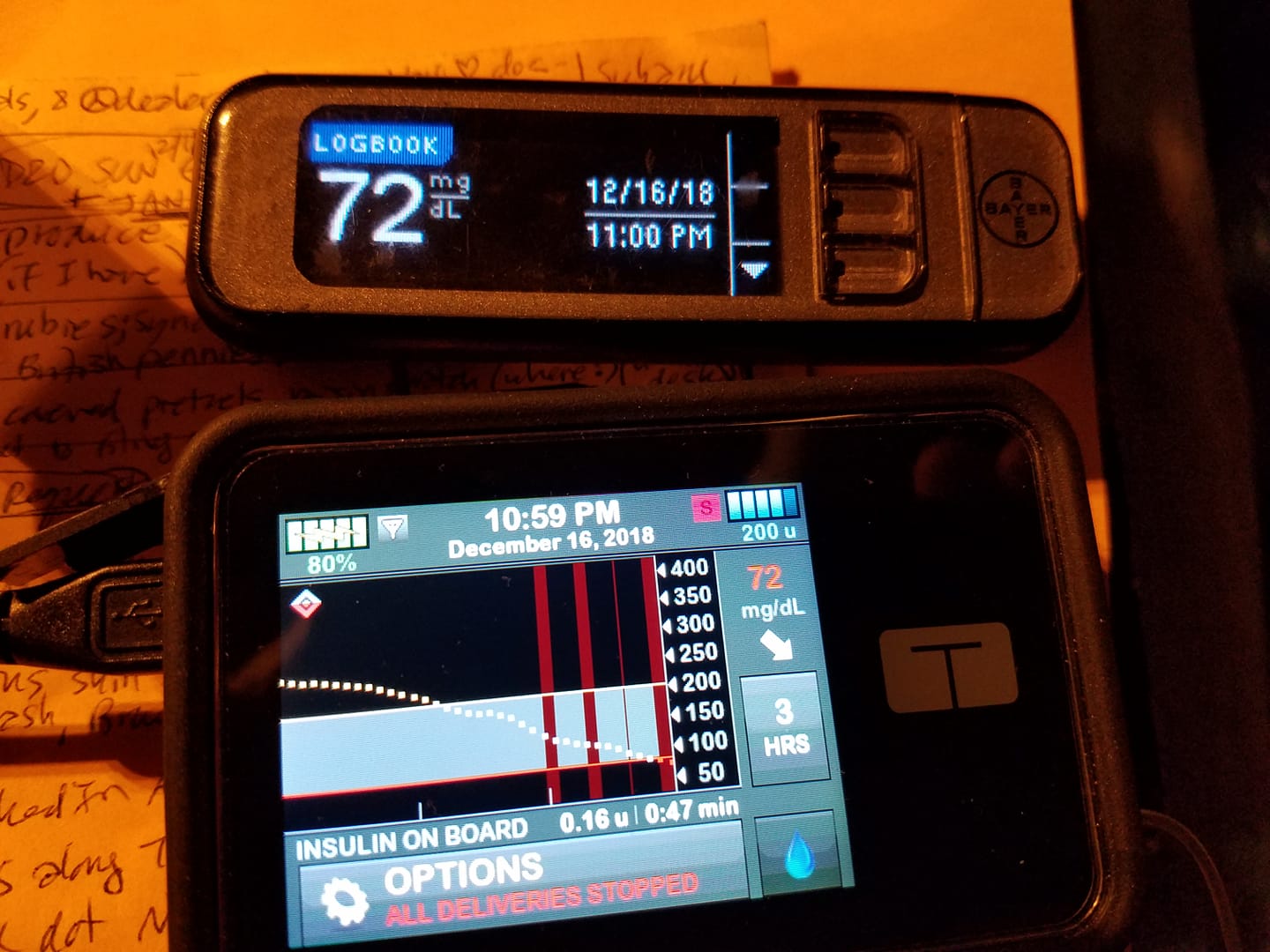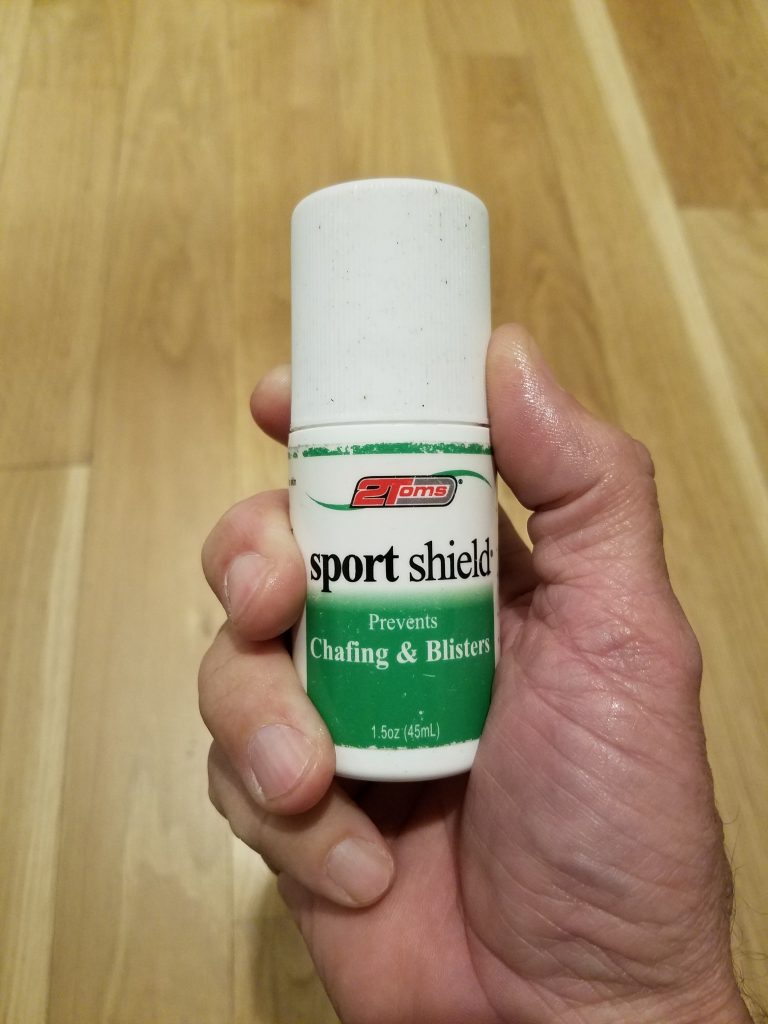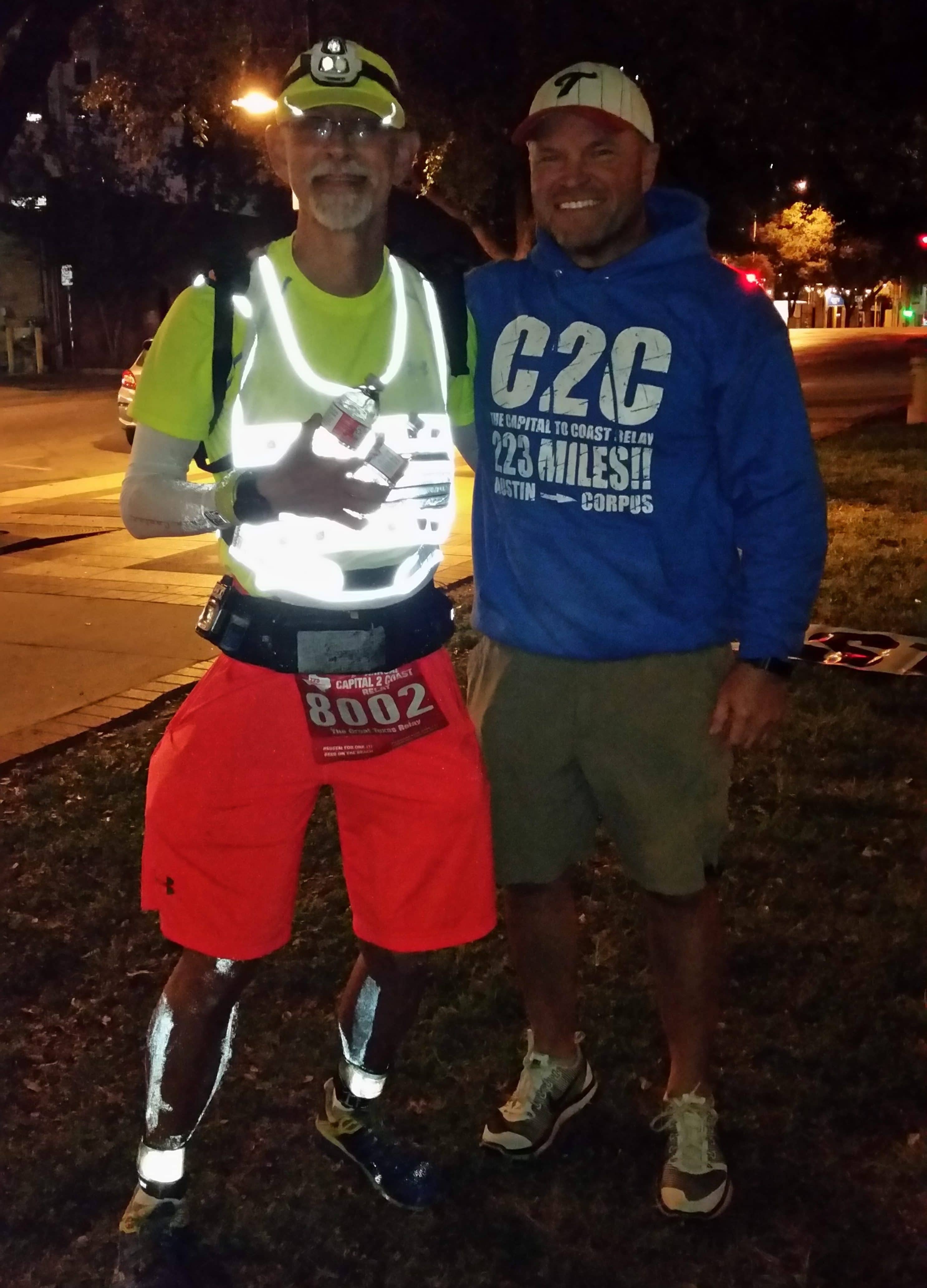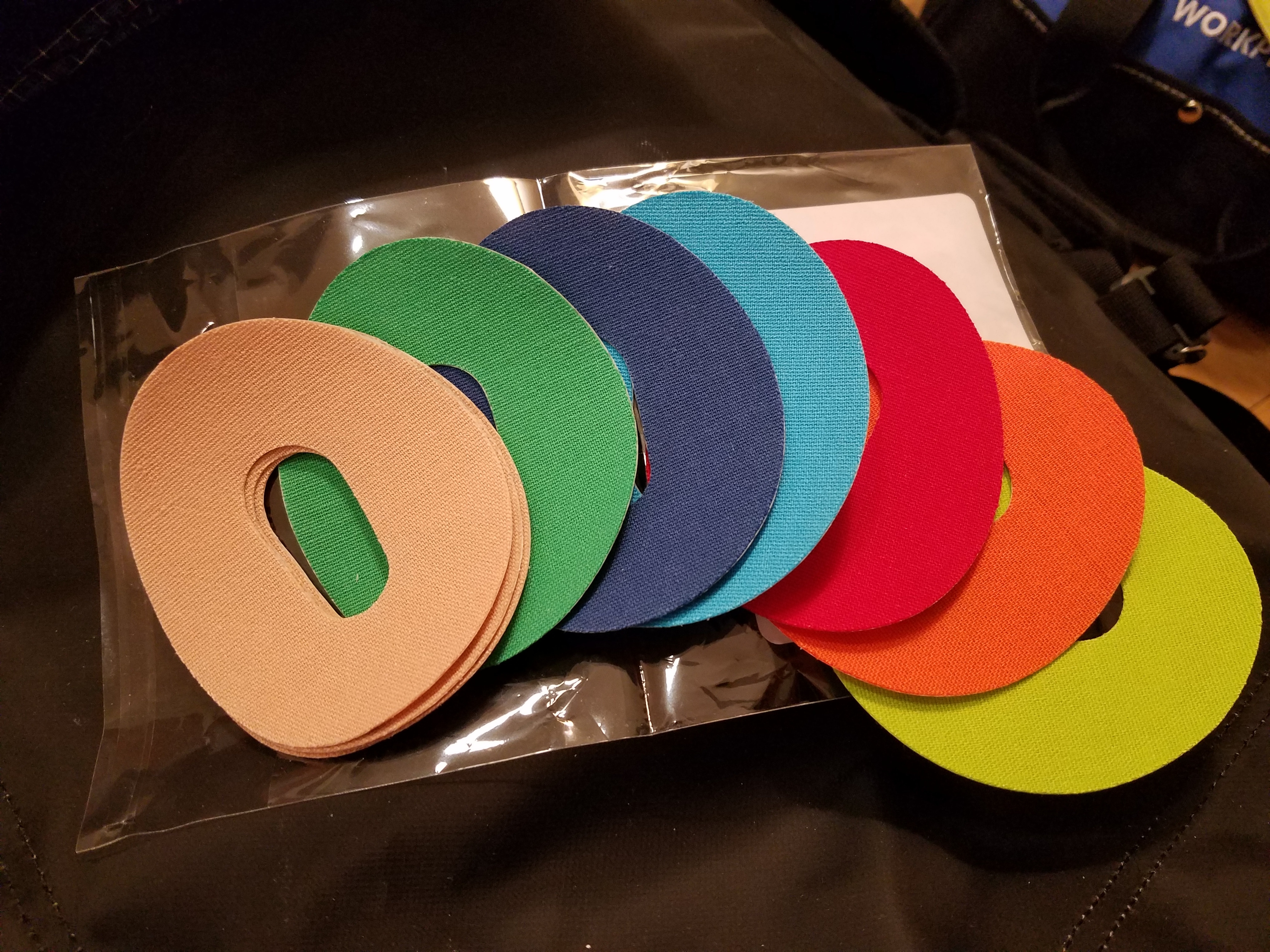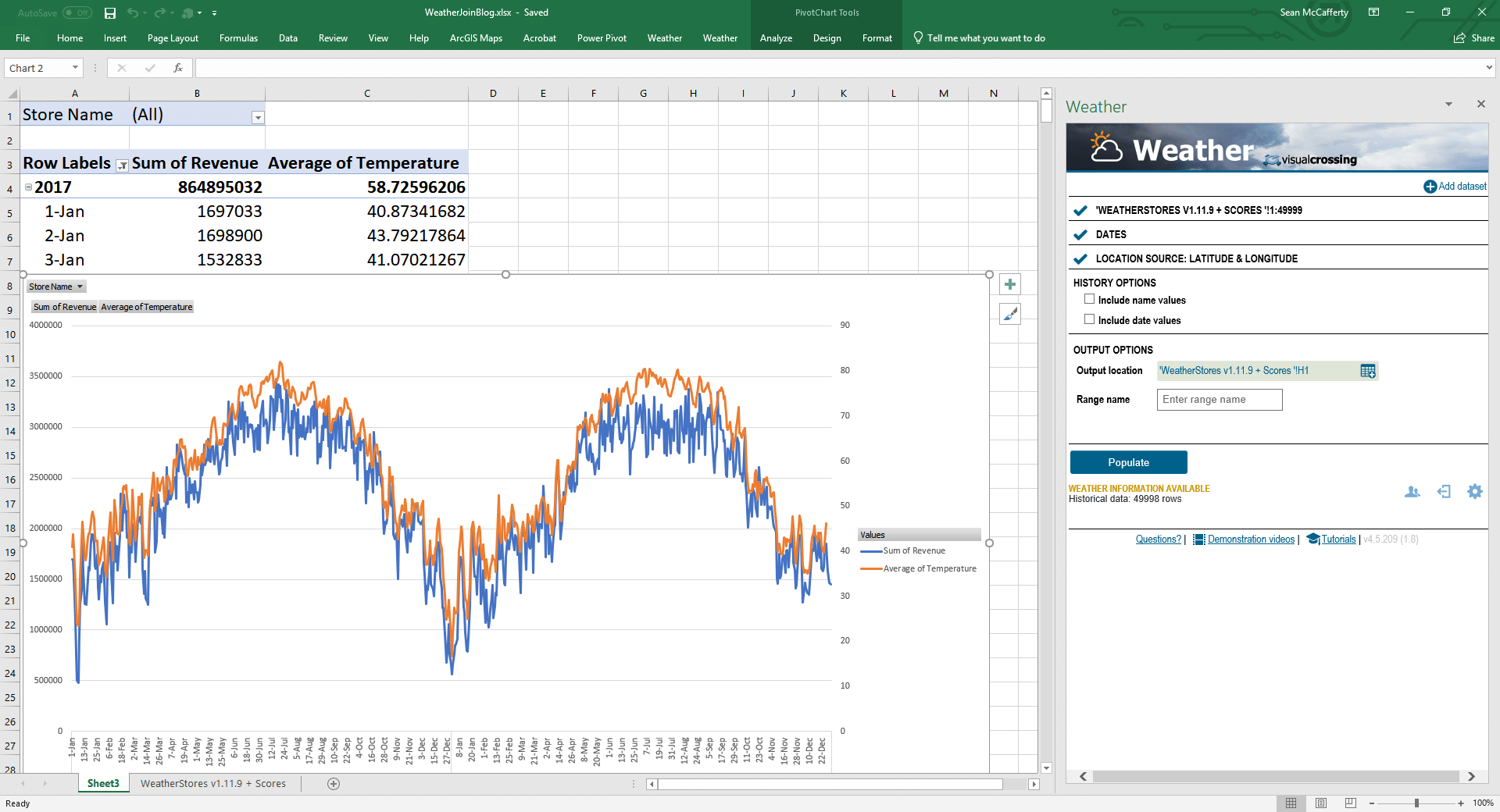Your donations help T1Determined #keepgoing.
T1Determined Sponsors and Brands
Your brand doing good in the world!
Real-time, in-person, newspaper, TV, magazine, and social media visibility that reaches and supports physically active people, people with diabetes, and everyone who loves feel-good stories of triumph over adversity.
Check out our Sponsorship and Brand Opportunities.
If it's here, I use it!
Some companies listed provide gear or supplies to me in exchange for endorsement. For others, I get discounts or prototypes in exchange for product feedback.
In all cases, I actually use all of these products and share both positive and negative experiences in my own words.
If you've got questions, feel free to drop me a line and I'll happily share my observations and experiences.
Garmin
I was not originally a Garmin customer. 1But during my runs across Texas and America, two competitors' models failed repeatedly, spectacularly, and in unison, discarding any workouts longer than 1000 kilometers. When you're trying to document a Fastest Known Time, that's a problem. Fortunately, I still had data from my Garmin InReach.
After the USA run, I switched to a Garmin Fenix 6x Pro Solar for my Swim Around Key West. Their ConnectIQ app displays my Dexcom blood sugars during multi-hour open water swims. The battery lasts 4 or 5 days with ACTIVE GPS TRACKING and has solar charging. What's not to like?
DISCLOSURE: I receive gear or compensation from Garmin.
UnTapped Pure Maple Syrup
After I completed the Type 1 Diabetes Run Across America in April 2021, I began training for a 12.5 mile Swim Around Key West. One of the race's rules is that all food breaks must be done in the water, without touching the boat. That kind of narrows down your options to whatever you can drink from a bike bottle attach to a rope.
During long swims, old-school runner's gels gave me uncomfortable digestive problems. Some had electrolytes or protein, some didn't. Some were too "solid" to slurp down while treading water.
Somehow I stumbled across UnTapped #MapleEnergy. It's high in potassium and doesn't upset my stomach; and when you mix it into a whey shake in a floating water bottle, you get a nice high carb, high protein fuel break that tastes like a milkshake and can be swallowed easily. Yay!
DISCLOSURE: I receive product discounts from UnTapped.
Inov-8
When it comes to super-long distance running, the littlest things matter. Like wearing out a pair of shoes on your average cross-state run (and I don't mean Rhode Island!).
After years of sore feet from running in racing flats that were at best suitable for marathons, made worse by breaking my foot while swimming (I know, I know), I went in search of a lightweight, breathable running shoe with a decent cushion AND hard rubber lugs on the sole that would stand up to endless hours on the road.
I finally landed on the Inov-8 Roadclaw 275. It's half road-shoe, half-trail shoe, which is perfect for my runs which involve pavement, sidewalks, graveled right of way, light mud, and sand.
They were so comfortable that I wore a single pair of Roadclaws 339 miles across Iowa in 2018, a few pairs during my fastest known time (FKT) across Texas in March-April 2019, and several more on my run across the USA in 2020-2021.
I added Inov-8's Terraultra G with their newest, super-durable graphene sole during my transcontinental run. Awesome for wet, muddy, steep road shoulders heading south from Tuscaloosa to Montgomery and into Florida.
DISCLOSURE: Inov-8 supplied me with running shoes at no charge for the Texas and USA runs.
LED Light Vest
I found LED Light Vest when looking for reflective illuminated safety vest for my first 200-mile run, a solo run of the Capital to Coast Relay.
I wanted a lightweight vest that wasn't heavy like a dental x-ray vest or swelteringly hot. It needed enough battery power for overnight runs, and visible at dawn and dusk, not just the darkest hours. And it had to be visible for up to a mile, with LOTS of reflective elements, not just a few little reflective bits.
This vest was designed by a Bosch automotive lighting engineer who's also a runner. Which explains a LOT.
Averaging almost 60+ miles/day during C2C, I ran a lot at night, draining batteries on my headlamps. The LED Light Vest's clever design aims one row of LEDs at the road in front of you. So when my headlamps died, I just switched my vest from "flash" to "always-on" mode and ran by that light.
The vest is so bright and unusual in appearance at night that during one training run, it literally frightened a dog into screaming as he jumped into his owners' arms. I'm serious. Not barking. Screaming.
It's that bright.
DISCLOSURE: LED Light Vest provided me with gear including extra battery packs in exchange for feedback on product durability under intense use.
RoadRunner Sports
I went through more shorts than you might think on the USA run. Originally, I had been wearing Under Armor's thinnest, most brightly colored running shorts. But by the time I started the USA run, I'd already worn holes in the pockets from carrying spare runner's gels to treat lows, I had torn the butt of one pair on a guardrail, and some of the others had just started to...well, rot. I think it was the constant sun and salt from sweat, but I don't know for sure.
So by the time October 2022 came around and I began my 5X "iron" event (703-mile triathlon), I wanted something that was still lightweight, a good bit sturdier, and would stand up to 131 miles of running.
I decided to go with RoadRunner Korsa shorts. They're well-made, breathable, and I found them to be quite comfortable. There's a little ID pocket in the front and a larger one in the back for a wallet or a few gels, where they won't scrape my thighs. The drawstring is sturdy and well-made, and the drape on my legs keeps most of the sun off. In retrospect, I should have probably gone for the Korsas in the first place for the USA run. But live and learn, and this is my direction going forward.
DISCLOSURE: I received shorts from RoadRunner in exchange for an honest evaluation of the product under high-endurance conditions. I had my choice of product and selected the Korsas for their visibility, durability, and suitability for purpose.
Shelta Hats
My Shelta Hats Raptor 2 desert running hat has a super-breathable top, firm, wide forward brim, and super lightweight and large Kalahari flap, plus drawstring neck cinch that fastens invisibly to the rear brim when not used.
My current version is actually high-vis orange, as you'll notice in almost all my recent photos.
This is a true transconner cap, and I am delighted to be beta-testing it for Shelta. The bright orange version they gave me for my transcon eventually became my "trademark look."
I also found it useful in waving at loose dogs to keep them from approaching. Your experience with dogs may vary. It all depends on the dog, I guess. But I was grateful to have it!
DISCLOSURE: I received and tested two Raptor II prototypes from Shelta for use during my USA run.
Orange Mud
I've had my Orange Mud single- and double-barrel HydraQuivers ever since I started running ultras. Together with my Naked Running waistband, they carry everything I need to have on me for a crewed long-distance run: two 25-ounce water bottles, my regular eyeglasses, phone, Garmin InReach personal locator beacon, emergency glucose, my ID and blood sugar testing meter, lancing device and strips.
What I loved about the HydraQuivers was the innovative fastening approach with adjustable padded loops that fit under the arms, not across the chest. I found both the single-barrel (pictured here) and double-barrel versions to be a perfectly balanced hydration load that beats chest/waist-mount hands down. The bladderless design doesn't make your back hot and sweaty. Unlike traditional hydration vests, it really lets me bleed off some heat during summer runs.
Orange Mud's CEO Josh Sprague is an avid ultrarunner himself, and he's personally involved in product design. It's amazing what you can create when you're doing it for people who love the sport as much as you do.
DISCLOSURE: I'm a "Dirt Unit" product ambassador and receive discounts on Orange Mud products.
See Me Wear
See that electrical tower behind me? I couldn't either, but it's there. And yet, you saw ME. Kind of hard to miss a 6-foot-tall bumblebee.
I discovered See Me Wear during training for Ironman Texas. In a city like DFW, it's you vs traffic, even on "bike-safe" roads. When I ride, my bike is lit up like a Christmas tree, I follow traffic rules and ride where I'm supposed to. All that and STILL some crazy texting nutcase nearly hits you.
For this reason, my wife and I bought SeeMe bike jerseys as soon as we discovered them. Then Earle Bower, See Me Wear's founder, sent me one of their newly-developed #SeeMeWear hi-vis running shirts in March 2018 plus one of their new hi-vis cycling jackets and they all immediately became part of my longest training days during the runup to Texas and beyond.
I wore my #SeeMeWear shirts back-to-back for eight very long days during my solo version of RelayIowa, through fog, rain, and 4 AM runs trying to catch up after massive tornados brought the event to a temporary halt. They go right next to my insulin pump on my list of lifesaving equipment.
DISCLOSURE: I've received clothing from SeeMeWear, and they've donated to my beneficiary charities.
Dexcom
During my run across Iowa in 2018 I was still struggling to get accurate blood sugar readings from a competitor's CGM. At one point when my hands were literally too filthy to risk a fingerstick test, that other CGM started threatening that if I didn't calibrate it would drop into Manual mode. I was wearing my old Dexcom G4 as a backup and discovered that without a finger prick test, it was still so accurate that I could use it to calibrate the other CGM.
After that, I started using the Tandem t:slim x2 / Dexcom G6 combo exclusively. My wife and crew chief Leslie and I depend on the Dexcom Follow app not just as a safety net but as a way to tell her what my sugar's doing as I come in from a stretch of transcontinental running. This app receives sensor BG readings from the transmitter via Bluetooth, then sends them to the cloud so she can watch what's going on.
If you know me at all, you know that I can never have too much safety, reliability, or accuracy in the stuff I use to deal with Type 1. Dexcom has literally made it possible for me to do this epic stuff.
DISCLOSURE: I've received CGMS supplies from Dexcom.
Tandem Diabetes Care
For my epic runs across Texas and the US, I needed an insulin pump that was super-reliable, integrated with the Dexcom G6, and could intelligently guide blood sugars to normal by pulling them out of nosedives well in advance of an actual low blood sugar episode. I also needed a pump/CGM combo that offered the ability to manually adjust dosing for extended exercise without relinquishing safety features like Control IQ. I love knowing that my pump will automatically temporarily suspend my basal if it predicts a low, and restart my basal once my blood sugar edges back up.
Since switching to the Tandem t:slim x2, my A1C has improved and I've gotten better control over blood sugar management during exercise. That matters a lot to me as an advocate for safe physical activity as part of Type 1 diabetes management.
DISCLOSURE: Tandem allowed the use of their logo on my support van and has helped promote my events. I haven't received any compensation or pump supplies.
2Toms / Medi-Dyne Healthcare
When I ran my first 100-miler, my feet blistered at mile 49, and I ran 51 miles on soles that felt covered in bubble wrap filled with sulfuric acid.
I then discovered anti-blister socks, and ran 200+ miles with no blisters until mile 180. That was definitely an improvement.
When I ran across Iowa, I used my latest discovery: 2Toms Sport Shield. I made it to mile 300 before blistering, and then ONLY BETWEEN MY TOES. Yep, that was the ONE SPOT where I didn't use Sport Shield.
DISCLOSURE: Medi-Dyne provided an assortment of products at no cost. I principally use Sport Shield.
Safety Skin
Ever since a motorist deliberately ran me off the road during the Honey Badger 100-mile race in Kansas, I've been jumpy about safety and visibility. It's no coincidence that two of my other sponsors are LED Light Vest and See Me Wear.
When I ran my first 200+ miler, I logged an average of 65 miles a day for 4 days, much of it overnight. Headlamps can go dim; and in such cases, I still want to be visible in someone's headlights. Tiny reflective hits on garments just didn't cut it for me. I wanted to be NOTICED!
Safety Skin is like an anti-chafe sports bar like BodyGlide mixed with sunscreen and bits of reflective dust. You barely notice it during the day, although because it contains zinc (like sunscreen), it helps keep the sun off your skin. But at night, unlike sunscreen, it's super-reflective. I call it "war paint for night running" (Check my legs in the photo!). How much do I love this stuff? Before they were a sponsor, this was the ONLY thing I requested for my birthday.
DISCLOSURE: SafetySkin provided product at no charge and I've used it during all my long events.
UPDATE: Sadly, SafetySkin is no more. However, you can still find the product on Amazon, so I've included the link.
RockaDex
One thing that happens a LOT on multi-hundred-mile runs is SWEAT. And when you've just inserted a $100 CGM (Continuous Glucose Monitor) sensor (or insulin delivery pod), you don't want it coming off before its time is up. RockaDex is an adhesive "over-patch" that sticks down firmly and holds the edges of the sensor adhesive down. I usually add a little SkinTac just in case, but typically the overpatch outlasts the sensor. And while I like the plain one in the foreground, they come in lots of colors!
DISCLOSURE: RockaDex provided product for use during my USA Run.
Visual Crossing
I fuss over details. Like exactly when to start a transcon in California in order that I miss monsoon season, arrive in Florida before it gets muggy, and minimize sub-freezing temps across the Continental Divide? Which route has the fewest rainy and windy days? How can I integrate that info into my spreadsheet for daily starts, finishes, and gear changes?
Leslie ran across Visual Crossing's route-based weather forecasting solutions for transport companies--which is incredibly helpful when you're out in the weather for nearly 100 days. We adapted it to our run across America.
DISCLOSURE: Visual Crossing provided free use of its online weather forecasting tool and historical weather data for use during my USA Run.
Better Diabetes Life
In 2019, my health insurer's Nurse Help Line called all their diabetic members to try to get them to exercise. The thing is, I had just set the fastest known time for a solo run across Texas. Typical example of why so many of us T1s are sick and tired of preconceptions about physical inactivity from, of all people, our healthcare "team."
Living with T1 actually starts with the head and the heart, not with medical advice. Before I started exercising around age 40, when my sugars were not good and I had become both inactive and overweight, THIS program is what I really needed instead of the frustrating and completely unhelpful conversations with online clinical staff who didn't know me.
I reviewed and completed BDL's courseware at no cost so I could decide whether to let folks know about it, and I thought it was great.
Type 1 diabetic and registered nurse Patricia Daiker's Better Diabetes Life is non-judgmental and focuses on your goals and diabetes management, not what everyone else thinks you should be doing. I just wish I had seen it 15 years ago.
DISCLOSURE: Better Diabetes Life provided free access to this program in exchange for feedback and honest evaluation of the product.

